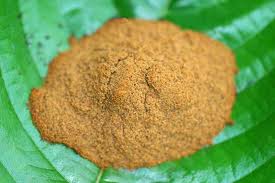Source: Series on Legislative Reform of Drug Policies Nr. 13
April 2011
By Pascal Tanguay
Kratom in Thailand
Decriminalisation and Community Control?
In early 2010, the Thai Office of the Narcotics Control Board (ONCB) developed a policy proposal to review different aspects of the criminal justice process in relation to drug cases. The possibility of decriminalising the indigenous psychoactive plant, kratom, was included in the ONCB’s proposal for consideration by the Ministry of Justice. This briefing paper provides an overview of issues related to kratom legislation and policy in Thailand as well as a set of conclusions and recommendations to contribute to a reassessment of the current ban on kratom in Thailand and the region.
The briefing is based on desk research of existing documentation as well as field research carried out in October and November 2010 in Bangkok, Surat Thani, Trang, Satun, Songkhla, and Hat Yai in Thailand. Kratom (Mitragynia speciosa korth) is a tropical deciduous tree that is part of the Rubiaceae family (same family as coffee). Indigenous to Southeast Asia, the tree can reach up to 15 metres or more and produces big broad leaves that have long been used for medicinal and recreational purposes. In Thailand, the kratom tree can mostly be found in the south of the country. Kratom use has been reported to act on the central nervous system, both as a stimulant and a depressant, depending on the level of dosage. Kratom leaves contain over 25 alkaloids, among which the alkaloid mitragynine is the most important.
Kratom has been traditionally chewed by people in Thailand, especially on the southern peninsula, as well as in other countries in Southeast Asia. In southern Thailand, traditional kratom use is not perceived as ‘drug use’ and does not lead to stigmatisation or discrimination of users. Kratom is generally part of a way of life in the south, closely embedded in traditions and customs such as local ceremonies, traditional cultural performances and teashops, as well as in agricultural and manual labor in the context of rubber plantations and seafaring. People from the southern provinces, especially in Pattani, Yala and Narathiwat provinces, are predominantly Muslim and are prohibited from drinking alcohol based on the dictates of Islamic beliefs. With strict controls on alcohol, kratom is an alternative substitute, not specifically prohibited by the clergy, but regulated by the state.
Recent drug use trends in Thailand indicate that a second pattern of kratom use is emerging. Approximately five years ago, young people from teenagers to people in their thirties started boiling kratom leaves (15 to 100 leaves at a time) to produce a tea as a base for a cocktail coined 4×100 (สี่คูณร้อย – pronounced: sii koon roi). The basic 4×100 cocktail includes the kratom tea, cough syrup, Coca-Cola, and ice cubes. The cocktail is generally prepared twice or more per day, depending on availability of leaves and money. Young people feel the need to drink 4×100 in hidden settings due to fears of arrest by law enforcement. Compared to traditional use, 4×100 users are subject to some measure of community discrimination, though community perceptions are far milder than for yaba or heroin users.
CONCLUSIONS AND RECOMMENDATIONS
* Kratom is an integral part of southern Thai culture. Criminalisation of kratom is unnecessary and counter-productive given decades of unproblematic use.
* In the absence of health and social harms, decriminalise use, possession and production of kratom and empower community leaders to control production and manage consumption.
* Revise thresholds for sentencing in regards to boiling 4×100, which should not be considered as the production of a new drug.
* Strengthen and reinforce national pharmaceutical control systems including compliance with prescription laws and policies at pharmacy level.
* Facilitate unhindered access to kratom for scientific research and explore medicinal properties, especially its potential as a substitution drug to manage alcohol and drug dependence.
* Inform and build the capacity of Thai media and the general population to present balanced evidence that does not stigmatize people who use kratom and 4×100.




 Creative Commons Attribution
Creative Commons Attribution